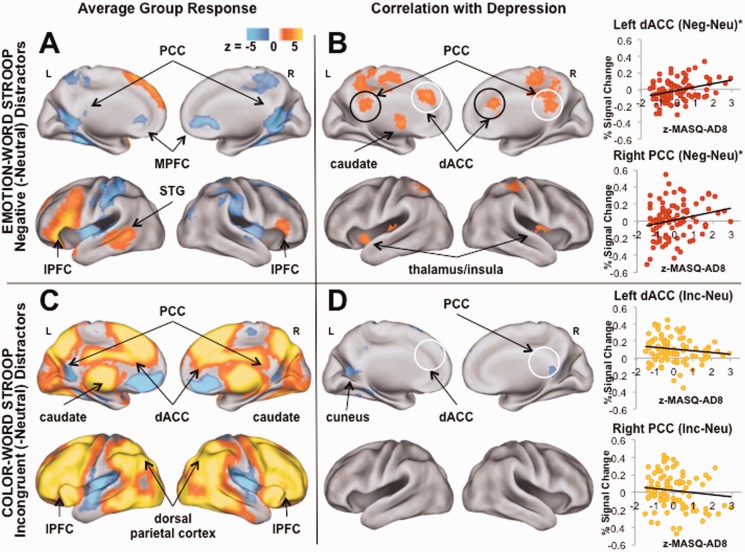Fig. 2.
Group and depression-related responses to negative or incongruent distractors. (A) Across the group in response to negative (compared with neutral) distractors, increased activity was detected in regions of lateral prefrontal cortex (lPFC) likely involved in aspects of cognitive control such as maintaining task goals; decreased activity was observed in medial cortical and parahippocampal regions of the default network (DN) implicated in internally directed attention. (B) Higher severity of depressive symptoms predicted increased activation to negative (-neutral) distractors in regions of DN including posterior cingulate cortex (PCC); and in a region of dorsal anterior cingulate cortex (dACC) involved in cognitive control and mediating the allocation of resources to other brain networks. (Regions in which activity was extracted for each task and plotted here are circled in white). (C) Across the group in response to incongruent (-neutral) distractors, increased activity was observed in lPFC, dACC and regions involved in attending to the external world, e.g. dorsal parietal cortex. (D) Higher severity of depressive symptoms predicted decreased activity to incongruent (-neutral) distractors in regions of cuneus and areas of DN. Note: z-MASQ-AD8 = z-transformed scores for the Mood and Anxiety Symptom Questionnaire Anhedonic Depression subscale; *P < 0.05.

